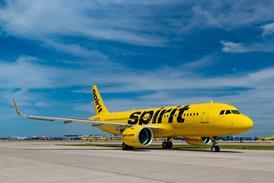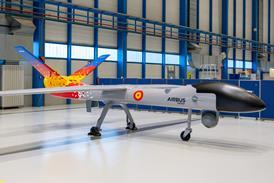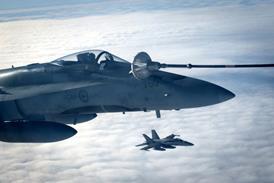Performance-based navigation programmes will be dramatically increased by the US Federal Aviation Administration over the next 20 years, a draft first update of the agency’s national airspace plan reveals.
The report, Update to roadmap for performance-based navigation, is the first FAA blueprint for plans to expand upon area navigation (RNAV) and required navigation performance (RNP) since the policy was approved in July 2003.
The agency is moving rapidly ahead with RNAV plans following the successful introduction during fiscal year 2005 of 89 new RNAV routes, with plans to introduce another 144 in 2006. The FAA says it will publish 24 en-route “Q-routes” and 11 or more low-altitude “T-routes” during 2006.
Oceanic operational trials using 30nm (55km) separation between RNP-4 approved aircraft are beginning this month in the South Pacific between California and Australasia, the report says, adding that the agency wants to extend the trials to other areas of the Pacific. The early tests will use both automatic dependent surveillance–contract (ADS–C) and direct controller-pilot communications. ADS–B (broadcast) for oceanic operations is expected to be up and running before 2010, says the report.
Terminal operations will also be rendered more efficient through the use of additional RNAV standard terminal arrival route (STAR) and standard instrument departure (SID) procedures. The FAA expects to publish 79 additional STARs and SIDs in 2006, and another 200 by 2010. There are also Congressional mandates for introducing as many as 300 lateral precision with vertical guidance (LPV) routes each year, the report says.
Strategies from 2011 to 2015 include RNAV route usage above flight level 180 (18,000ft/5,500m), allowing GPS-enabled direct routeing and lower level en-route T-routes, and finally using time-of-arrival control to manage merging and spacing for aircraft arrival at airports. The FAA also says it plans to add hundreds of basic RNP, special aircraft RNP, aircrew authorised RNP, and LPV approaches, as well as to develop standards for closely spaced parallel and converging approaches.
Between 2016 and 2025 the FAA plans to complete the transition to a performance-based system that will include RNP-optimised airspace procedures, four-dimensional trajectory management, requiring RNP in congested en-route and terminal airspace.
Meanwhile, American Airlines reports $50 million savings and Delta Air Lines claims $30 million cost reductions in FY2005 as a direct result of introducing RNAV SIDs and STARs at their respective main hubs, Dallas/Fort Worth and Atlanta, because of more direct routeing and reduced separation.
JOSEPH SINGLETON/WASHINGTON DC
Source: Flight International























